This collection of interviews started off as a completely naïve idea to learn more about the ways in which women express themselves creatively. I had come from an academic background concentrating on women within DIY music communities. I wanted to explore other processes of creativity and examine how women’s creativity was expressed in alternative mediums to that of which I was most knowledgeable, and involved: music.
I got hold of a couple of books on ‘women artists’ only to find that more than half the women profiled in these texts, although crucial in spearheading, legitimising and popularising the artistic and creative mediums utilised by women, were either now deceased, or producing art that didn’t speak to me, as a 23 year old with no prior knowledge of art, art criticism or high-art. Not to put too fine a point on it, I knew nothing about art, intellectually, (a point that may become clear when observing some of my awkward, stumbling early interviews. I can’t begin to thank some of these interviewees for humouring my naivety and entering into the spirit of my interviews!)
From the frustration of not being able to find out about the female artists that I was interested in, and the knowledge that these particular artists’ work didn’t always receive the attention I felt it deserved, I began to email women I had heard of, in a hope of interviewing them.
To my surprise and joy, artists wrote back, and this whole project just snowballed into what you now hold in your hands. Which is miraculous when you read the self-conscious, clumsy email interview request I initially sent out!
I have been keen to involve, interview and profile women involved in a large cross section of artistic mediums. Coming from a non-art background, as such, ‘art’ to me was what I had all around me, not just that which I read about (and couldn’t relate to) in the art books I had tried to educate myself with. ‘Art’ was the ‘lowbrow‘, the comic books, colouring books, films, illustrations, cartoons, graffiti and websites that I saw and interacted with everyday. It was the creators of this art that inspired me. It was these women I wanted to know more about.
This definition of ‘art’ is that which I wish to explore within these pages. Art as something people can relate to, and be inspired by, and make themselves. ‘Art’ for me suddenly became this thing that I didn’t have to feel awkward discussing with artists, even though initially I had felt I was out of my depth talking about it. I had been preoccupied with the feeling that I didn’t have the knowledge to discuss art and interview artists intellectually.
And this isn’t just a feeling I had either. Ruth Nobel, in her essay, Womban, claims,
‘My society, the culture I have learned, tells me that Art is something special, separate, something that only a few can participate in while the rest stand by and watch’.
And, similarly, when I initially contacted zine and comic illustrator Isy to ask to interview her, she responded to my request by stating,
‘I have to say, I don’t consider my cartoons art in a way! I am pretty sceptical about the whole art thing’
And this is why I have contacted and interviewed such a wide range of amazing women involved in art, because to me, Isy’s cartoons are as much of a valid, important and exciting form of artwork as anything being created elsewhere. It is art that inspires, motivates and intrigues me (as is all the artwork featured in this collection). And it is this element of art that I think should be mined; The everyday greatness of art. The creativity and artistry of everyday people.
In support of this, illustrators, art activists, comic book artists, graphic novelists, photographers, painters, crafters, web artists, colouring book artists, cartoonists, mixed-media artists, animators, paper cut artists, film makers, social sculptors, digital video artists, graffiti artists, knitters, poster artists and fine artists have all been approached to be interviewed as part of this project.
Something that is a concurrent theme in all my interviews is the notion that all art is made in a political environment. Regardless of whether artists regard their work as political, or apolitical in theme & in creative process, there is no denying that it is all made within a political environment. I have been keen to discuss with the artists the impacts and influences this environment plays within art, and how our current political milieu affects art creation and consumption.
Looking more specifically at gender politics, I have also structured many of my questions to consider how the artists interviewed create their own spaces, locations and responses to the notion that ‘all art is work with a relationship to tradition ‘, in order to view how these artists respond to this relationship, and how they use, follow or eschew artistic traditions, and the male hegemony implied by this tradition and art history, within their own work, and why.
Linked to this is a question posed by Lesley Saunders, who asks,
‘Should they [female artists] even seek to assimilate their work to a tradition which, by gender and class domination, has inhibited the majority of people from expressing and perceiving themselves through cultural production?’
I think viewing the featured artists’ work, their cultural production, and commentary about it whilst keeping in the back of my mind notions about masculine traditions of the art world has added an extra dimension to the conversation and questioning posed by Saunders; to view whether women involved in art observe or even credit this view of integration with tradition, and note how it effect’s women’s artistic (& self) expression and perception.
I have tried to be careful when wording this introduction, and when contacting and interviewing the women involved in this zine not to describe the zine as being a project interested in women artists. I hope not to canonise the women profiled in this zine as ‘women artists’, or their work as ‘women’s art’, because I do not quite know what these phrases mean, or rather, what they are supposed to mean or say about the nature of art created by women. I also do not want to support, but disrupt, the structures and notions of this clichéd categorisation of ‘women in art’ that segregates these women from being legitimately involved in art, as a whole. I have been careful to talk of these interviews as being with women involved in art. I do not wish to treat these artists, or their work as a genre segregated from the main. I have made artwork created by women the focus of this project simply to highlight, promote and support the talented, exciting, varied and contemporary work being carried out now, by women, in various corners of current artistic creativity.
These women do not necessarily create the art they do because they are female, although some may do. I do not intend for this zine to make claims that the art these women create is associated to contributions they make ‘as women’ (or, crucially, that this zine is representative, artistically or politically of ‘women‘). I do however think that, as women, it is interesting to examine these artist’s influences, see what they express, how they express it and examine how they gain access to their ability and confidence. I wish to view how these women represent their own individual, disparate perspectives through their own artistic means. I am interested by what makes these women want to be and be able to be creative now. And by interviewing these artists, I hope to allow them to make claims of their own interpretations, and their own lives in their own words.
Interpretation, and hand-in-hand with that, misinterpretation are two key themes that have become important to me in collating these interviews. I have presented the interviews in this collection, unedited, as they were written and received in order for the women to make their own claims of their work, unaffected by my potential subjectivity in the role of editor. Importantly, I have also left intact all the cringe-worthy occasions where, in response to my line of questioning, artists have pointed out, corrected and pulled me up on my stumbling inaccuracies and misinterpretations of their work. From this, I became very intrigued by the nature of interpretation.
Women, especially now in this current culture & climate of ’celebrity’ are the keen focus of external moderation and gaze; their lives, appearances and choices are read and speculated about through this external interpretation. It is only to be expected then, that the work of women is also to be keenly judged, externally by others, without allowing women the time and voice to make their own intentions with their work known. It is with this is mind that I have interviewed, rather than simply profiled the artists in this collection: they are given the space to voice their own ideas and thoughts themselves.
The notion of ‘interpretation’ in art is a fascinating subject, and is what initially caused me to become personally attached, affected and inspired enough by the artwork of the artists featured in this collection to seek interviews with their creators. Had I not personally seen something in the art that spoke to me, via how I saw and ‘read’ the work, it would not have been as important and inspiring to me.
Speaking of Tracy Emin’s work, journalist Marcus Field once stated:
‘So when people say they hate it, or don’t get it, I argue that surely it’s just the same way other people see their lives reflected in Bob Dylan songs or Sylvia Plath poems. If you’re from the wrong side of the tracks or you drink too much or you’re promiscuous, then it’s Tracy Emin you bond with’
It is precisely this bond, this interpretation of artist’s work as mirroring our own lives that intrigues me. As I stated before, my primary knowledge of women active in creative mediums is in the field of music. There are certain lyrics, certain songs that I have such a strong affinity for, and connection with, because I can take on board the sentiments and intentions of the words, making them speak of and to me. Is this then any worse than someone misinterpreting and speculating on artist’s intentions with their work, and getting it “wrong”? I once read an interview with Stephin Merrit of the band The Magnetic Fields, in it he claims:
‘Often people tell me the songs really mean something to them and then explain what it is, and I have to explain to them that the song is completely different from what they think it is. I’m not suggesting that it has a fixed meaning, I’m just telling them what the original meaning is’
Interviewer: ‘Don’t you feel misinterpreted?’
‘The point of all art is misinterpretation’
Interviewer: ‘Is it’?
‘Isn’t it?’
If we are to believe Stephin’s claim that the point of all art is misinterpretation, then the relationship between artist and viewer is therefore a symbiotic one, the work only taking on meaning once it has entered the public domain, and has been engaged with. Does this not then remove artistic agency on the part of the creator?; By viewers imposing their own aesthetic on the artwork, seeing it as speaking to them, and of them (with a voice potentially very different from the one the artist initially intended), and for viewers to recontextualise the work according to their own value schemes and personal histories, the artwork is imprinted with the interpretation of others. Is this a weakness? Or conversely, is this the power of art, and of a great artist, that they can create work that can speak with and to, and engage with a wide spectrum of viewers, who can feel they can relate to and appreciate it in their own way? Musician and singer Kristin Hersh, of her song writing once claimed, responding to the interview question:
‘Is it important to you that people interpret the songs in the way you intend them?’
Kristin: ‘I don’t allow my intentions to enter the picture, so it’s a moot point. The songs are smarter than I am which allows them to function as other people’s soundtracks too’.
The functionality therefore of creative mediums, such as art, to act both as communication from artist to viewer, and for viewers to be able to decode the messages within this communication as their own, is something I hope to reflect in the structure of this collection of interviews: the style, and unedited nature of its presentation. While I feel it is crucially important that the artists have the space to comment on the intentions of their artwork, and their creative processes, and thus have ownership of the thoughts and ideas they convey within their work; (allowing them their own personal, creative agency), I think it is also very important to comment on the relationship between artist and viewer. By leaving in all the awkward clashes of thoughts and interpretations in my questioning, I hope to create a genuine observation of the relationship that art generates between female creators (the artists), and female viewers (like me), and grant a legitimacy to both of these that I find (typically male) art criticism doesn’t leave room for.
I wrote an academic paper a few years ago that looked at the extent to which female autobiographical subjectivity is produced and verified by a culture that commodifies self-authentication. I wrote at length about how the imposed dominant narratives (meaning) of women’s lives, produced by society & culture and exteriority holds a complex relationship with both the narrator themselves, and their audience; thus restaging autobiographical subjectivity by forming a triangular subjectivity between dominant narratives, audience and narrator.
These ideas returned to me while writing these interviews, looking at meaning and interpretation of art, and how it is ascribed through triangulation of culture & arts’ relationship to tradition, the artist’s intentions and the audience’s reading of the work.
I think this brings to attention the need to explore relationships of ‘power’ when ascribing meaning to artwork, and to keep in mind the extent to which intersubjectivity affects the agency women have over their own work.
I concluded the academic paper by claiming that, ‘if other’s narratives produce two thirds of an intersubject’s subjectivity then it is important that relationships of power between the three narratives [dominant narrative of society, narrator’s own narrative, and audience narrative] are analysed so that the woman producing the autobiography does not lose her voice and self-representation, and so that women’s representations aren’t dominated and appropriated by a meta-discourse that could promote the subordination of women’s ‘selves’.’
And this, on reflection, goes part way to explaining why I have produced this zine in the way I have, so that elements of culture, the historical connotations of art, and audience participation & interpretation all hold a place in exploring and ‘understanding’ art created by these women, but that the artist herself does not lose her voice to a dominant, appropriating meta-discourse of art criticism. In this zine, the artist has been granted the power and voice of her own creativity.
- - -
*The following artists are featured in this collection, here‘s a quick introduction to them:
Lisa Petrucci. Lisa was the first person to agree to be involved in this project, and I couldn’t have been more pleased that she started the ball rolling. Lisa’s wide-eyed work can be seen reproduced & adorning various stationary sets, magnets, purses and mirrors in comic stores the land over, alongside frequently displaying her exquisite exhibition pieces in shows in the US.
Guerrilla Girls. Any project looking at contemporary female artists would be incomplete without the wise and sound words and images of the Guerrilla Girls. They are a true inspiration, and never fail to provide a necessary conscious to the art world. Despite being inundated with questions and interview requests from people desperate to connect with the GGirl’s knowledges and experiences, I am so very thankful to ‘Kathe Kollwitz’ for taking the time to respond to my particular questions, and for her encouraging and positive words about this lil’ project of mine.
Ariel Schrag. Ariel is the author and illustrator of such comics as, Awkward, Likewise, Definition and Potential which are all part of Ariel’s autobiographical account of High School. Ariel is only just older than me, and began making comics over 10 years ago when she was 15. To compare our achievements over this time frame makes me queasy at the thought.
Juliet Martin. Of all the artwork I have discussed in this project, Juliet’s was probably the most intriguing to me, both in terms of subject matter and form [web-art]. What you don’t get to see is the multitude of questions Juliet, quite rightly, didn’t get the time to answer when I went over the top with my questioning; as Juliet’s work challenges my notions of ’art’, and my understandings of ’art’ on so many levels, and I can’t thank her enough for that.
Jeremy Dennis. Jeremy is one of those people who since speaking with her, I am so very keen to meet her in person, such was her friendly, enthusiastic and inspiring response to my questions. Jeremy’s comic book and zine artwork is so prolific that I’m not sure how I’d ever be able to catch up with her output, let alone know how on earth she finds the time to produce it all. Delving headfirst into Jeremy’s websites was a joy I can’t explain.
Gina Garan. Gina’s work had enraptured and captivated me for years before I started this project, because of this, she became one of the people I was most nervous about contacting! Her work photographing Blythe, a 1960’s doll, in the most beguiling of poses, situations and outfits almost gave me the greatest excuse I could find for having a bedroom stuffed to the rafters with dolls myself, and not feeling ashamed of my child-like habits! A large selection of Gina’s photographs are collected together in her book, This Is Blythe. Congratulations to Gina on the birth of her baby since I interviewed her.
Elizabeth McGrath. I cannot remember exactly when I fell for Elizabeth’s work, it just seemed to appear in my life one day. The time, patience and effort Liz’s diorama’s and dolls take to create, dress and set up is something to be admired indeed!
Nikki McClure. I believe Nikki was actually supposed to be taking a break from her work when I contacted her, and in retrospect I feel really bad for interrupting her vacation, as she works so hard on her intricate paper-cuts that she sure deserved the break! Nikki’s beautiful work is reason enough to wish the year away in order to flip over to the next month of her well-known series of calendars that she illustrates and publishes each year. I am kicking myself that I only re-discovered the work Nikki had done for the Free To Fight! Interactive self-defence project after I had done the interview, because there’s so much I wished I’d asked about it.
Lady Lucy. If ever you needed someone to remind you of just what one person can accomplish, and to give you inspiration to try and achieve what you always wanted to, Lucy is your Lady. A force to be reckoned with in the U.K DIY community and with fingers in many pies (so to speak), Lady Lucy reminds me why it’s important to get out of bed on a morning, because there’s so much to be doing, and creating.
Jacinta Bunnell. Jacinta is the co-editor of the genius gender-blending colouring books, Girls Will Be Boys Will Be Girls… and Girls Are Not Chicks. I fell for Jacinta the moment I heard of her books, and I thank her so much for persevering with her PC to get her interview to me after she lost all her responses first time around after her computer crashed, as I can’t imagine this zine without her input. Never before have I heard and seen so much sense come from the fingertips of one woman. Jacinta was a joy to communicate with.
Allison Cole. I once read a comic anthology and slowly began to become obsessed by the honesty, grace and startlingly quiet truth of one particular strip in it. The strip was Joe Blow, and it was by Allison Cole. I fell in love. You too can fall in love, check Allison’s Never Ending Summer graphic novel.
Dame Darcy. Of all the people I wanted to be involved in this project, Dame Darcy was at the top of my wish-list. Her comic series Meatcake is one of the most exquisite, dizzying and entertaining things I’ve ever had the joy to read. Crossed-wires and a computer-malfunction on my part led to Dame Darcy only replying to part of my interview questions, but no matter, she still dazzled me with even these. Darcy’s Frightful Fairytales graphic novel is something all wayward-babysitters ought to read as a treat of gothic excess to screaming children!
Kathleen Lolley. Beautiful doesn’t even begin to cover it! Kathleen’s artwork is quite possibly beauty itself.
Isy. Reading Isy’s autobiographical zine/comic Morgenmuffel on the beach at Camber Sands, I knew that without interviewing Isy for this project it would be forever missing something… missing a sense of grounding and truth, and political importance. As soon as I got home, I emailed her. Isy’s illustrations convey a message and active demonstration of art-as-politics and politics-in-art. A true inspiration.
Tara McPherson. How could I not wish to interview a woman who has produced some of the most exquisite poster artwork for some of my favourite bands? Finding that Tara is also a super-talented comic and gallery artist meant that she was a painter I was just bursting to include in the zine.
Cat Mazza. My interviewing of Cat came at a time when she had a whole lot on her plate to deal with, University deadlines, family bereavement, employment, activism, knitting projects to organise as well as life-in-general. That she found the time to write such eloquent and inspiring emails to me about her exciting and thoroughly necessary art work that addresses capitalism and globalisation in the most creative of ways is just amazing. Cat was very keen to join forces with some of the knitters I know in the UK as part of her Nike Blanket project. Cat was recently involved in the Low Grade Symposium and art exhibition here in the UK, discussing, demonstrating and exhibiting her microRevolt knitted work and knitpro computer package, as part of Future Sonic 2005 series of events (http://www.futuresonic.com/).
Jill Emery. Former bassist in Hole and Mazzy Star, Jill is also a painter of great talent. Who can forget the startlingly disturbing cover art she produced for Pretty On The Inside? Jill sent me a gracious email in which she stated she was very keen to be involved in the same space as the other women involved in this zine who she admired, and was also keen to see and learn more about the work of some of the women involved who she did not know. This, for me, kinda sums up how invested in visual-art Jill now is. Jill also put her finger on how community spirited, supportive and encouraging of female artists a lot of the women in this zine have been.
Missy Kulik. DIY-er extraordinaire, Missy produces zines, comics, pins, tshirts and record sleeves, to name but a few of her art projects. Her book, Personal Charm: A Collection of Comics was self-published in July 2005. One of the most exciting and intriguing facts I learned about Missy during our contact is that she studies Trapeze. She’s a braver lady that I am!
Debbie Drechsler. After falling in love with Debbie’s work via her artwork on the sleeve of the Eels album Electro Shock Blues, I fell headlong into Debbie’s cartoons, such as The Summer of Love graphic novel. Debbie’s comment in her interview that creativity is utterly important – for everyone – made my heart flutter with the recognition of why I decided to put this zine together.
Shelley Sacks. I am so grateful that Shelley found the time to complete this interview in amongst her doing ten thousand other projects in the U.K, U.S and South Africa. Shelley really turned me onto Social Sculpture, something I was completely ignorant of prior to discovering her work. When I first read about Shelley’s Exchange Values project, (which is referred to greatly within the interview), I was inspired beyond belief. The use of art to highlight the effects of free trade and explore alternatives to egocentric globalisation is something that captured my imagination, and this, linked with Shelley’s inspiring thoughts on the role of artists in re-envisioning and reshaping a more democratic, integrated, life-sustaining world, made her input to this project vital for me. The vast Exchange Values project creates an interface between producers and consumers through the displaying of blackened, stitched sheets of banana skins alongside voice recordings of 19 of the ‘invisible producers’ of these bananas. Shelley’s definition of social sculpture, as articulated in her interview, is so intrinsically important to the ethos behind the creation of this zine; in terms of the inclusion of the everyday creativity and artistry of all the artists involved, and what art inspires others to be mobilised to create. Every human being can be an artist.
Wynne Greenwood. Wynne is probably best known as Tracy, Cola and Nikki, the three creative entities that make up the band/visual art project Tracy + The Plastics. Wynne’s projected backdrops of her video art, featuring Nikki and Cola, complete the live Tracy + The Plastics experience, with Wynne playing and singing live as Tracy. Wynne’s challenging and educated video art is also exhibited in installation shows and exhibitions in the US, as well as smaller performance pieces being used as projected backdrops for other live bands, such as Le Tigre. Wynne’s thoughts on art, artistic processes and societal implications of the use of digital video, and the links between life and video art creation challenged and inspired me in equal measures and I was thrilled to be able to discuss all this more with her.
Cover artists:
**R Clout. Clout has described her work as dealing with horrible things and painful moments which one does not mention, through politeness or fear, but which nonetheless exist. A prolific exhibiter of art in my local community, and within the UK, she was generous enough to produce the artwork for the cover of this zine, alongside carrying out her other work, including “Am I even Bovered?” a show with artist Andy Sykes. (roseclout@yahoo.com)
**Lucy Sweet. Lucy’s artwork adorns the back cover and contents page of this zine. Alongside her artwork, Glasgow based Lucy is also in the band Lucky Luke, is a columnist for the Sunday Times and the New Statesman, publishes Chica zine, and her novel Have Love Will Travel was released this month. Yikes! As you can imagine, I was thrilled that she had time to send this artwork. (chicapublications@hotmail.com)
Melanie Maddison, Leeds, UK. August 2005.
10 hours ago
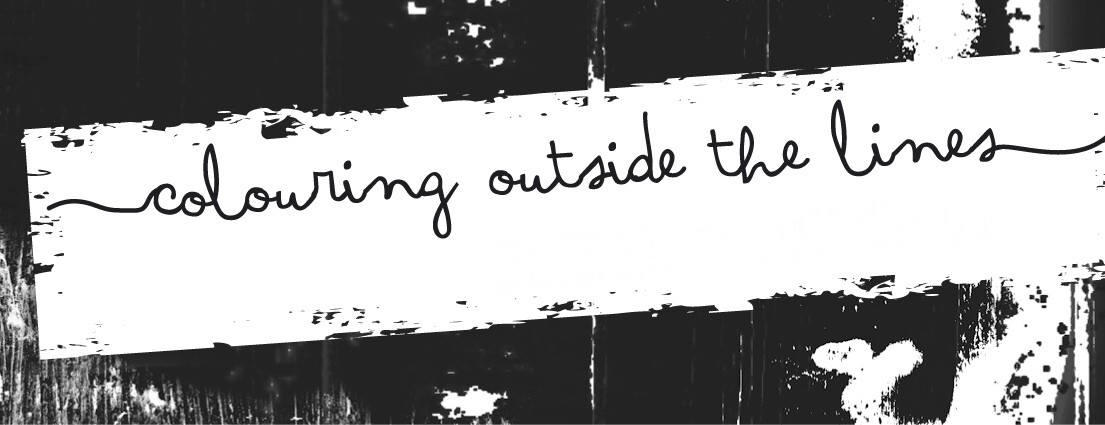





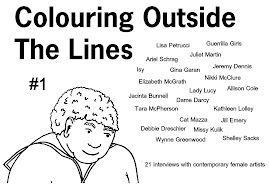
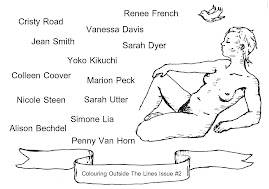

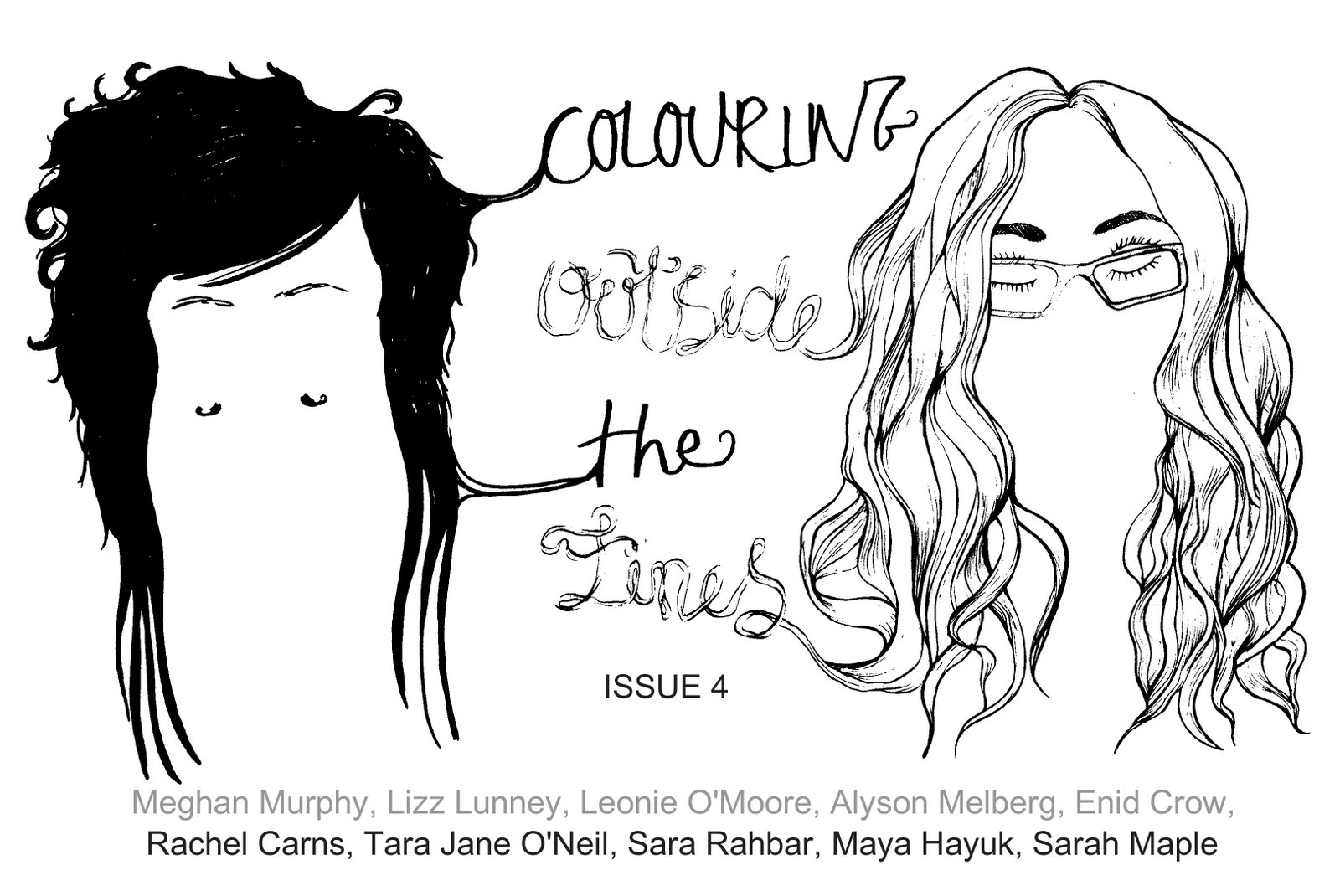

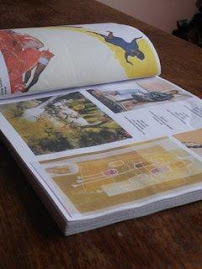



No comments:
Post a Comment